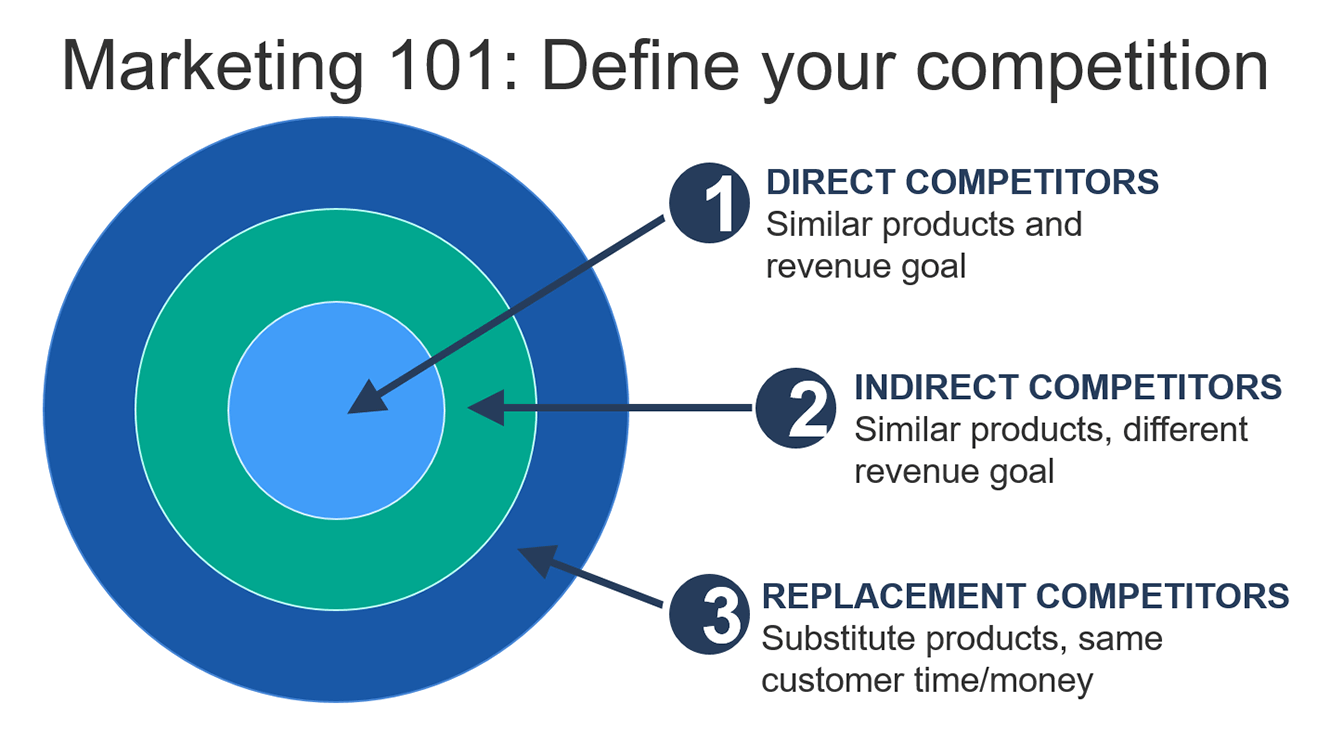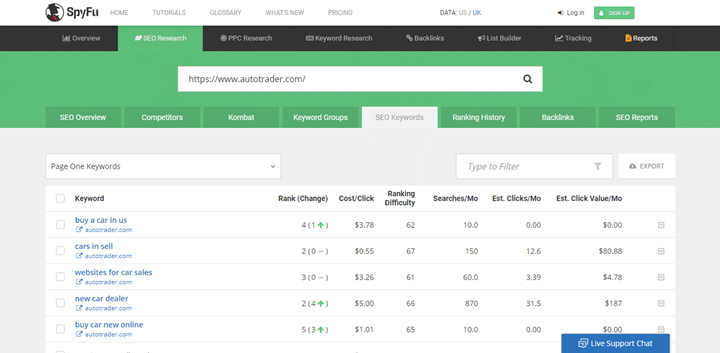
Content creation is by far the most important marketing segment these days, and it’s the reason why you need to stay up to date with the latest developments in the field.
No matter how innovative and creative you might be, you still have to monitor competitors’ activities to stay one step ahead of them. Competitive research and analysis are secret ingredients of a successful content marketing.
According to a recent study, content marketing leaders experience almost eight times more site traffic than their less efficient counterparts. That’s precisely why you have to invest time and efforts into market research.
In this article, we will show you the guide to carrying out your competitive content analysis.
5 Steps to Comprehensive Content Research
Each brand needs a good marketing strategy before it begins with content creation and promotion. But if you realise that online activities don’t generate the desired results, you are probably doing something wrong.
Analyzing content published by your competitors will enable you to detect the problem and find the solution.
You should divide the research into a few logical phases and analyse each one of them step-by-step. Once you do that, the answers you are looking for will pop up immediately. But what exactly are these research phases? Let’s take a closer look here.
#1. Identify Biggest Competitors
There are probably thousands of brands or companies worldwide dealing with the same business. However, it doesn’t mean that all of them are your direct competitors.
For instance, Microsoft Corporation is clearly not your competitor if you are a company of 7 employees who design only agile project management software. You have to narrow down the research corpus.
The easiest way to do that is to determine two things – products you sell and buyers you target. Do you offer highly premium products or cheap but low-quality items? The target audience is entirely different in these two cases, so you need to be clear about it.

image by MarketinSherpa
Now that you’ve determined your market precisely, you can figure out the top 5 or top 10 competitors. They will be your focus group for the further research.
#2. Content Analysis
We’ve come to the essential part of this process – content analysis. To get the best findings, you have to pay attention to both the quantity and the quality of competitors’ content.
First of all, you should determine all types of content that your rivals create. Most likely you will find these features:
- Blogs
- Images
- Video
- Audio files
- Infographics
- eBooks
- Case studies
- Webinars
- Whitepapers
- Status updates
A quantitative research should tell you how many blogs or whitepapers your competitors published in a given timeframe. Besides that, you need to find out the most common type of content they post and the frequency of activities.
For example, you will learn that they create 25 videos a year, meaning that they do it once in two weeks. If you notice that video content generates a lot of user engagement, it will be a valuable indicator of your marketing strategy.
But the quantitative analysis goes beyond that. You also need to explore video duration or an average blog post length, and the most popular topics. Some studies revealed that the ideal length of a blog post is 1,600 words but is it worth for your niche as well?
Perhaps you will discover that the most successful bloggers in your industry write not more than 400 words per posts.
All of these quantitative factors are important for your analysis.

A qualitative research digs deeper into the essence of the digital content. Every little piece of content has its peculiarities, and we will analyse them one by one. But before we proceed, we should also advise you to pay particular attention to the topics your competitors talk about the most.
What are the most popular topics among your rivals? Are there any themes they repeat time after time? Are there any seasonal topics relevant to your business? Answering these questions, you will learn about the very nature of competitors’ content. After that, you can explore all types of content individually.
Blogs
The length of a blog post is not its only remarkable feature. On the contrary, you should analyse the style to see what makes it so appealing to the audience. Perhaps they use a data-driven approach to increase the credibility. Or maybe they write in a friendly and conversational tone to strengthen relations with their followers. Keep this in mind and use it as a good practice in your blog posts, too.
Case Studies, Whitepapers, eBooks
If you target a highly sophisticated audience, perhaps you should focus your efforts on eBooks, whitepapers, and case studies. Try to analyse how your business opponents do it – do they have groundbreaking ideas and where they come from? Are they referencing to the latest scientific findings related to your niche? Whatever it might be, try to accept it as part of your content creation strategy.
Infographics
This is one of the trendiest content formats nowadays because it combines both the visual and the textual information. An infographic is 30 times more likely to be read than a purely textual article.
But what makes your opponent’s infographics better than yours? Is it a more beautiful and attractive design? Are you using dull colours? Could it be that you are offering obsolete data? A lot of elements constitute a high-quality infographic, and you should be aware of them all after a competitive content analysis.
Podcasts
Audio format is gradually earning back part of its old glory. A lot of people listen to podcasts in their cars but also in their offices while working. You should analyse how your business challengers design such content.
Some podcast creators probably invite key opinion leaders to discuss trendy topics, while others prefer one-person monologues. Are they using short sentences and simple language, avoiding industry jargon and buzzwords? Audio content should not confuse your audience, so pay attention to these details and learn.
Videos
More than 80% of an entire Internet traffic will be video by 2020. In such circumstances, you absolutely must include it in your content strategy. But how about your competitors? Are they into professional video design or self-made office videos? What sorts of visual effects bring them the highest traffic? Can you afford the same kind of content creation? There are so many questions to answer if you want to follow the footsteps of your most significant rivals.
#3. Cross-Channel Promotion
With almost 2.5 billion active users, social media represent the most substantial marketing force in the world. If you want to get the best of your content, you have to launch a cross-channel promotion and integrate it into a meaningful unit. However, you don’t need to utilise all channels available, and that’s where competitors’ analysis comes into play.
It is logical to assume that Facebook as the largest social network will be your weapon of choice no matter what. But if your target audience consists of well-experienced professionals, perhaps you will discover that all your competitors are focusing on LinkedIn primarily.
After you find out the most fruitful channels of promotion, you should also see what your opponents post on their pages and how often they do it. It’s hard to imagine a brand that doesn’t publish more than one or two posts a week, so the real question is – do I need to be online 24/7 or just a few times a day? Take a look at your adversaries, and you’ll get a correct answer.

We also suggest you mind the language they use and determine if it is formal or informal. Social networks usually serve as the means of friendly interaction, which is why you will probably find out that the tone of their comments and messages is polite and conversational, stimulating followers to continue the communication.
Alicia Le Rennetel, a content strategist at EssayOnTime, shares her experience:
“User engagement is not the only thing that is important. You should also learn from your opponents how often they address followers and how promptly they do it. The quality of social media content is not only about the content itself, but also about the way you engage with your audience.
You need to provide them with a timely feedback and act as the mediator between the brand and its followers. Revealing a human side will only make users more interested.”
This is extremely important because social media can skyrocket your website traffic and even enable your content to become viral. To put it simply, it can generate you tons of new leads and conversions.
So, did you check out the social sharing options on your competitors’ webpage? If not, do it immediately. You will probably realise they added social share buttons to every single piece of their content.
#4. Search Engine Optimization
You’ve probably figured out by now that digital content is a complicated thing and rest assured that SEO doesn’t make it any simpler. According to the research, more than 60% of marketers think that improving SEO and growing organic presence is their top inbound marketing priority. That’s why you need to analyse the way your competitors prepare for optimisation if you want to keep the business growing in the long run.
Keyword strategy plays the crucial role in SEO, which is why you need to understand how the most advanced players in your niche approach this issue. If they are always ranked higher than your website in engine searches, try to embrace their optimisation model.
First of all, you have to be aware of the relevant keywords. If you are dealing with the automobile industry, you will probably realise that your business rivals use a lot of different keywords and phrases.
For instance, using SpyFu, you can research their content to see if they only write keywords like “cars” and “automobile” or they also exploit options such as “vehicle”, “machine”, “jeep”, “convertible”, “van”, and many others.

Using SpyFu to research your competitors
Perhaps it seems irrelevant, but all these keywords add their contribution to the overall search engine ranking, and it could be what separates industry leaders from your company. If you are not sure how to cover all keyword options, you should analyse competitors thoroughly and also utilise online tools like the Google Keyword Planner.
Once you’ve detected all keywords, you are ready to move on and add them to all SEO-relevant webpage elements. If you don’t know where to insert keywords, the competitive content analysis will make it clear to you. You will find them in headlines, titles, subheadings, URLs, image descriptions, and everywhere throughout the content itself.
#5. Compare and Adjust
Following such a comprehensive research, you’ll have a plenty of data to analyse and compare to your content creation strategy. Therefore, the final phase of competitive content analysis is to detect where your business challengers outdo you and what you can do to change it.
Of course, pay attention to all aspects of your research and adjust each one that doesn’t fit the highest standards in the industry. This goes both for the quality and the quantity of your content, regardless of the channel of communication. When you’re done with it, you should be seeing gradual improvement in user engagement, lead generation, and conversions.

But even then, don’t forget that the game is not over. You need to carry out competitive content analysis regularly to make sure that you never fall behind your rivals again.
There is not a single company out there that can function in isolation and neglect competitors’ activities. This is especially the case with content creation because things evolve very quickly in this area. You need to stay up to date with the latest developments in your niche and act accordingly. The only way to do that is to conduct a competitive content analysis.
In this article, we showed you the guide to researching the content made by your biggest competitors. Don’t hesitate to give this manual a try and feel free to let us know in comments how it worked out for you and if you have other valuable methods to share with our readers.
 This is a guest post by Rachel Bartee, Rachel is a content writer and a marketing consultant. She is content-oriented and knows how to put words into action. She feels passionate about travelling and inspired by her morning yoga. Get in touch on Twitter.
This is a guest post by Rachel Bartee, Rachel is a content writer and a marketing consultant. She is content-oriented and knows how to put words into action. She feels passionate about travelling and inspired by her morning yoga. Get in touch on Twitter.

